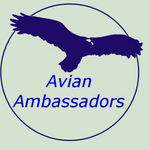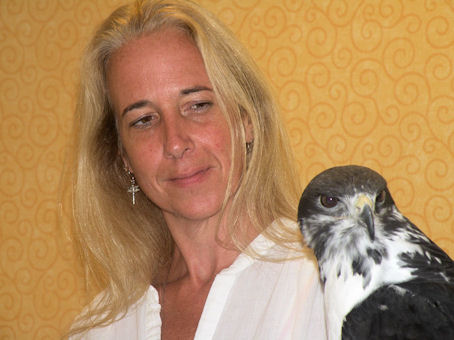Training is an ongoing thing. No matter how well we believe our birds are trained, no matter how hard we have worked to generalize behavior, one day in our confidence we make a mistake. That happened to me this morning …
Mijo is a yellow-naped Amazon; he is just over a year old and has lived here at Avian Ambassadors since September last year. He actually lives in the house with us and the dogs, right in the middle of everything, pretty much. He gets to go and hang out on the porch for a good time each day with a “jungle gym” built from recycled plastic tubing and other “treasures”, and in the house his cage is in the lounge. While the day can be quiet at times it also has its share of surprises; by design I want Mijo to have as many different experiences as possible and so far our strategy seems to be working. It is not unusual for one of our re-homed dogs to bark loudly while standing within a couple of feet of Mijo. Nor is it unusual for someone to suddenly appear through the hallway right next to his cage. Over time we have worked to generalize his calm behavior to anything that happens.
So, this morning I got dressed and made my way to my computer, passing Mijo on the way. Suddenly he pinned himself against the roof of his cage, wings flared, eyes pulsing rapidly. What in the world happened? I quickly stepped away from him, he calmed and returned to his favorite perch. What I believe had happened was that the t-shirt I was wearing was so different to anything I had previously had on it was scaring him. The shirt, one I have not worn in a very long time is black with several large pink logos of a sailing boat class I used to sail all over the front. Typically I wear light colored shirts.
What to do? I could go back to the closet and change the shirt, however that was really avoiding the issue and not working to fix it. So, since the back of the shirt is plain, without the logos, I turned it around. The plain black shirt appeared less scary and I was able to reinforce Mijo for calmer behavior it its presence. We worked on this for a while intermittently; I would go off about my business and come back and reinforce the calm behavior, still wearing the shirt backwards. Once he was no longer showing discomfort I turned the shirt around. At first, as expected, there was a regression towards discomfort, nowhere near as severe as the first instance but none the less still there. Gradually over the next 30 minutes I worked to reinforce his calmer behavior in the presence of the “killer” shirt. Right now I would say his behavior in the presence of the shirt is calm, he will perform cued behaviors and willing approach me, no matter how close I am to the cage.
In working with Mijo to overcome this fear I feel the most important aspect of the training was that he always had choice; he could approach me or not. Choice is a powerful thing; it imbues the subject with a degree of control and that raises their confidence. Mijo was in total control of when he chose to approach or leave the scary situation. He was never coerced into “getting over it”. I have seen removal of choice as a training strategy being promoted many times by those “internet gurus.” In fact I have a couple of other articles brewing that will focus on some of these later … for now all is calm in the world of Mijo. I just need to find some brightly colored shirts to wear so that we can continue to generalize calm behavior!
Happy training,
Sid.
 Running from 9 am until 5 pm on Saturday and Sunday the class is an excellent opportunity for both beginning and experienced raptor presenters to learn the most contemporary, science based approaches to handling raptors for educational programs.In addition to basic raptor biology the workshop will cover equipment usage, handling techniques, and the science of behavior change.
Running from 9 am until 5 pm on Saturday and Sunday the class is an excellent opportunity for both beginning and experienced raptor presenters to learn the most contemporary, science based approaches to handling raptors for educational programs.In addition to basic raptor biology the workshop will cover equipment usage, handling techniques, and the science of behavior change.
 Our special guest presenter for the third year will be Robin Shewokis of the Leather Elves. Robin is a renowned enrichment consultant to zoos and the companion bird community. She will present a special workshop segment about enriching the lives of captive raptors.
Our special guest presenter for the third year will be Robin Shewokis of the Leather Elves. Robin is a renowned enrichment consultant to zoos and the companion bird community. She will present a special workshop segment about enriching the lives of captive raptors. avianambassadors
avianambassadors com?subject=8th%20Annual%20Raptor%20Handling%20Class
com?subject=8th%20Annual%20Raptor%20Handling%20Class



